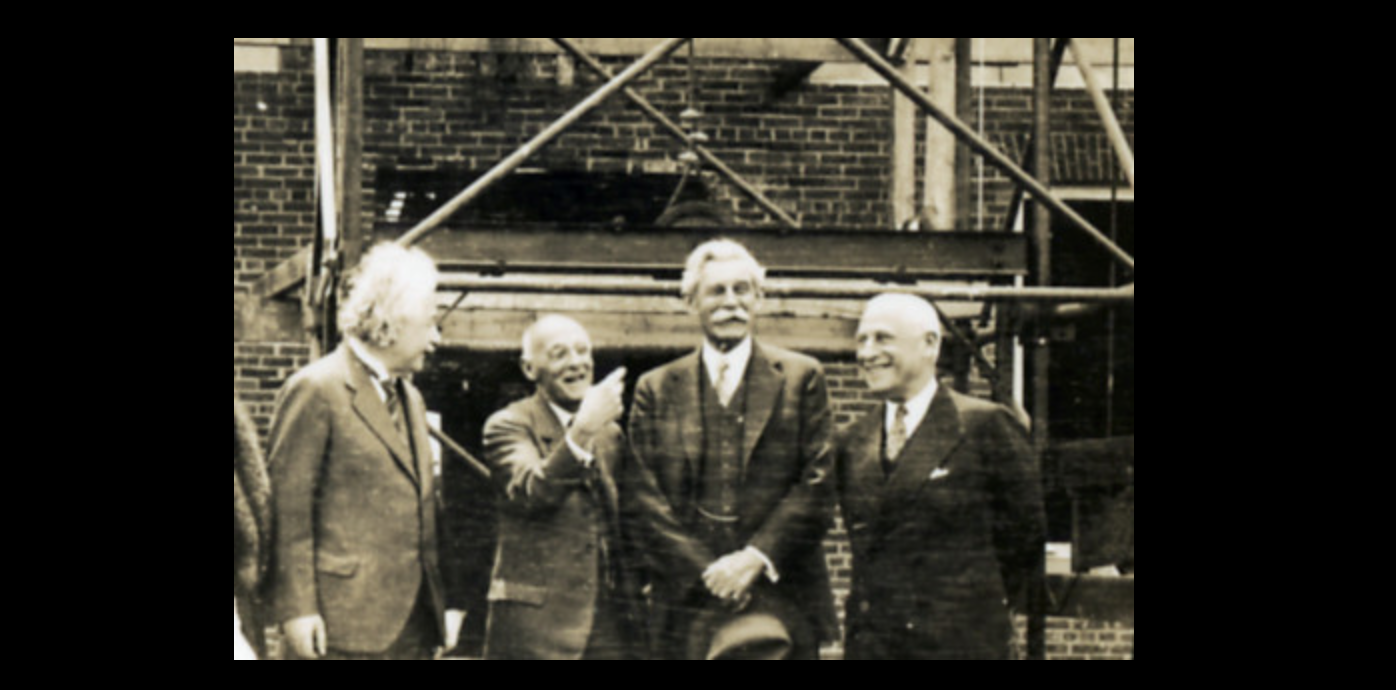4 /4 Turing's Cathedral: The Origins of the Digital Universe, by George Dyson

Image: left to right: Albert Einstein, Abraham Flexner (https://en.wikipedia.org/wiki/Abraham_Flexner) , John R. Hardin (https://en.wikipedia.org/w/index.php?title=John_R._Hardin&action=edit&redlink=1) , and Herbert Maass (https://en.wikipedia.org/w/index.php?title=Herbert_Maass&action=edit&redlink=1) at the IAS on May 22, 1939 Turing's Cathedral: The Origins of the Digital Universe, by George Dyson (https://www.amazon.com/s/ref=dp_byline_sr_audible_1?ie=UTF8&search-alias=audible&field-keywords=George+Dyson) . Arthur Morey (https://www.amazon.com/s/ref=dp_byline_sr_audible_2?ie=UTF8&search-alias=audible&field-keywords=Arthur+Morey) (Narrator), Random House Audio (https://www.amazon.com/s/ref=dp_byline_sr_audible_3?ie=UTF8&search-alias=audible&field-keywords=Random+House+Audio) (Publisher). Audible Audiobook – Unabridged. https://www.amazon.com/Turings-Cathedral-Origins-Digital-Universe/dp/B007HI3IF2/ref=sr_1_1?keywords=george+dyson+turing+cathedral&qid=1583703859&s=audible&sr=1-1 The legendary historian and philosopher of science George Dyson vividly re-creates the scenes of focused experimentation, extraordinary mathematical insight, and pure creative genius that gave us computers, digital television, modern genetics, models of stellar evolution—in other words, computer code. In the 1940s and '50s, a group of eccentric geniuses, led by John von Neumann, gathered at the newly-created Institute for Advanced Study in Princeton, New Jersey. Their joint project was the realization of the theoretical universal machine, an idea that had been put forth by the mathematician Alan Turing. This group of brilliant engineers worked in isolation, almost entirely independent from industry and the traditional academic community. However, because they relied exclusively on government funding, the government wanted its share of the results: the computer that they built also led directly to the hydrogen bomb. George Dyson has uncovered a wealth of new material about this project, and in bringing the story of these men and women and their ideas to life, he shows how the crucial advancements that dominated twentieth-century technology emerged from one computer in one laboratory, where the digital universe as we know it was born. .. .. .. Permissions: Unknown photographer - Shelby White and Leon Levy Archives Center, Institute for Advanced Study, Princeton, NJ, USA / The copyright holder of this file allows anyone to use it for any purpose, provided that the copyright holder is properly attributed. Redistribution, derivative work, commercial use, and all other use is permitted. Description | English: Einstein, Flexner, John R. Hardin, and Herbert Maass at the laying of the Fuld Hall cornerstone, at the Institute for Advanced Study on May 22, 1939 Date | 22 May 1939 Source | Shelby White and Leon Levy Archives Center, Institute for Advanced Study, Princeton, NJ, USA Author | Unknown photographer